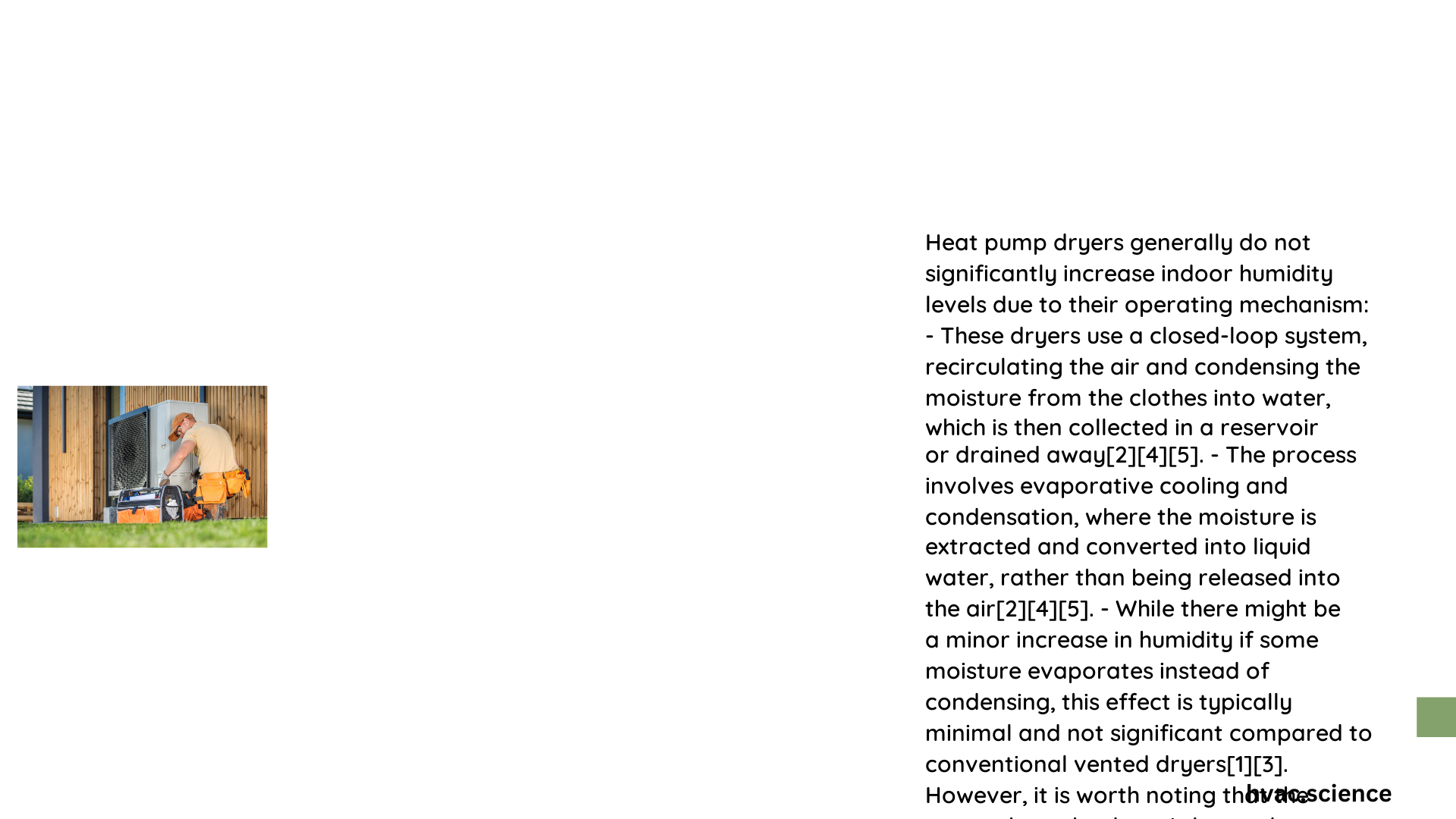Heat pump dryers represent an innovative solution for efficient clothes drying that strategically manages moisture without significantly increasing indoor humidity. Unlike traditional vented dryers, these advanced appliances utilize a closed-loop system that condenses and removes moisture through specialized drainage mechanisms, ensuring minimal impact on room humidity levels while providing superior drying performance.
What Happens to Moisture in Heat Pump Dryers?
Heat pump dryers employ a sophisticated moisture management process that prevents humidity buildup. Here’s a detailed breakdown:
How Do Heat Pump Dryers Capture Moisture?
- Closed-Loop Circulation
- Recirculates warm air within the system
- Prevents moisture release into room environment
-
Captures water through condensation process
-
Moisture Collection Mechanisms
- Water collected in dedicated drainage tank
- Direct hose connection for continuous drainage
- Prevents moisture accumulation in living spaces
Comparative Humidity Impact Analysis
| Dryer Type | Humidity Increase | Moisture Management | Energy Efficiency |
|---|---|---|---|
| Traditional Vented | High | Poor | Low |
| Heat Pump | Minimal | Excellent | High |
| Condenser | Moderate | Good | Moderate |
Can Heat Pump Dryers Cause Condensation Problems?

While heat pump dryers are designed to minimize humidity, certain conditions might influence moisture levels:
- Ventilation Considerations
- Proper room ventilation crucial
- Recommended air circulation around dryer
-
Avoid enclosed, poorly ventilated spaces
-
Maintenance Factors
- Regular heat exchanger cleaning
- Check drainage systems
- Ensure proper filter maintenance
Factors Influencing Humidity Levels
Room Size and Configuration
- Smaller rooms more susceptible to humidity changes
- Large, well-ventilated spaces minimize moisture impact
- Recommended room size: Minimum 10-12 square meters
Environmental Conditions
- Ambient temperature affects moisture retention
- Humidity levels vary based on geographical location
- Seasonal variations influence drying performance
Practical Recommendations
- Optimal Placement
- Install in well-ventilated area
- Maintain minimum clearance around dryer
-
Ensure proper drainage connection
-
Humidity Monitoring
- Use hygrometer to track room moisture
- Ideal indoor humidity: 30-50%
- Adjust dryer settings accordingly
Technical Insights
Moisture Removal Efficiency
- Average moisture extraction: 4-6 liters per drying cycle
- Energy consumption: 25-50% lower than conventional dryers
- Advanced heat exchange technology minimizes humidity release
Expert Recommendations
- Choose heat pump dryers with advanced moisture control features
- Prioritize models with efficient condensation systems
- Consider professional installation for optimal performance
Potential Limitations
- Higher initial investment
- Slightly longer drying times
- Dependent on room ventilation quality
Conclusion
Heat pump dryers offer a sophisticated solution for moisture management, demonstrating minimal impact on indoor humidity when properly installed and maintained. Their advanced technology ensures efficient clothes drying while maintaining optimal indoor air quality.
